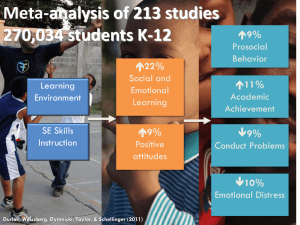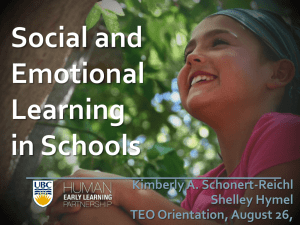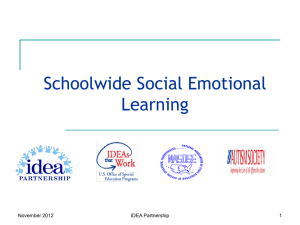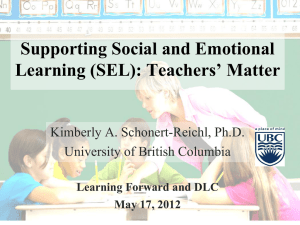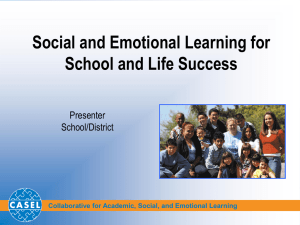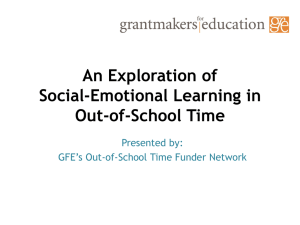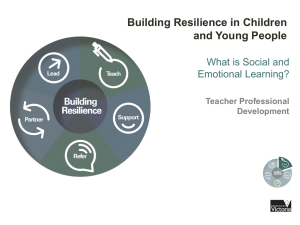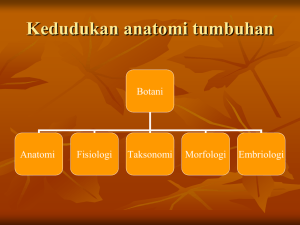biodas 1 1 sel totipoten dan protein 2011
advertisement
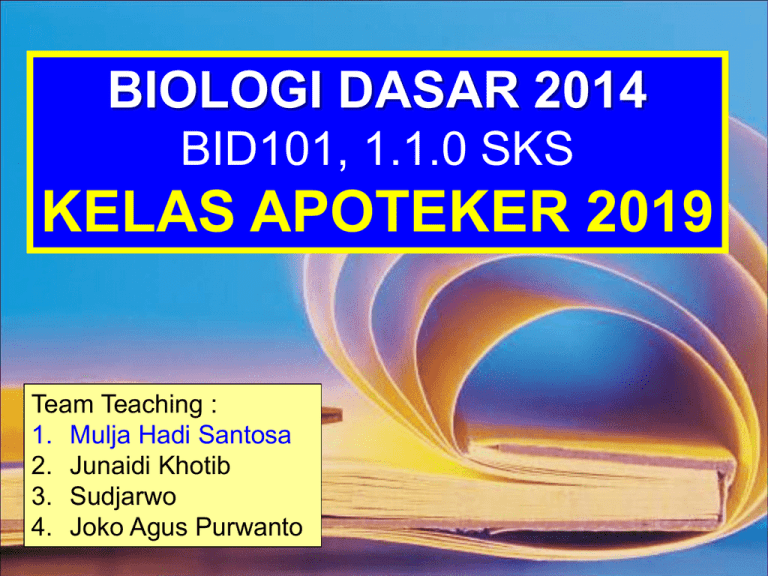
BIOLOGI DASAR 2014 BID101, 1.1.0 SKS KELAS APOTEKER 2019 Team Teaching : 1. Mulja Hadi Santosa 2. Junaidi Khotib 3. Sudjarwo 4. Joko Agus Purwanto dosen mahasiswa •BIOLOGI SEL •MOLEKULER •KEFARMASIAN • PRESENTASI SKEMA DAN GAMBAR • GUNAKAN KOMPUTER DAN AKSES INFORMASI INTERNET • BELAJAR HAL PRINSIP DAN KONSEP MAP • PERDALAM BACA “eBOOKS” (pdf), di tablet-PC !? BELAJAR MENULIS ULANG PENGERTIAN ( SOAL UJIAN) LADME LIBERATION SEL & OBAT ORAL OBAT INTAKE ABSORBTION DISTRIBUTION Disposisi METABOLISME EXCRETION 1 OBAT 2 SEL TARGET 3 Urin Tinja Keringat Jaminan : 1. Kualitas 2. Keamanan 3. Kemanfaatan 4. Akseptabel DRUG’S SIDE OF ACTION 1. 2. 3. 4. 5. 6. 7. LUAR SEL (CAIRAN BIOLOGIS) MEMBRAN SEL (RESEPTOR LUAR SEL, ENZIM, KANAL) SITOSOL (ENZIM) MEMBRAN ORGANELA (ENZIM, KANAL, RESEPTOR DALAM SEL) DALAM ORGANELA (ENZIM) MAKROMOLEKUL SEL (RESEPTOR DALAM SEL) DALAM INTI SEL (GEN ) 4 5 6 TOKSIK dosis 7 SEL TARGET Disposisi AKTIV Semua buku yang relevan dengan tema/judul : BIOLOGI SEL , BIOLOGI MOLEKULER, GENETIKA GUNAKAN eBOOKS LIGHT MICROSCOPE STEREO MICROSCOPE ( 5 – 20 pembesaran ) LIGHT MICROSCOPE CELL CELL TISSUE MICROSCOPE ( 50 – 1000 pembesaran ) ELECTRONE MICROSCOPE Transmission EM Scanning EM nm molekuler m seluler mm cm m SEL MAMALIA Animal, human eukaryon SEL MIKROORGANISME prokaryon bakteriofag virus ILUSTRASI BAGAIMANA VIRUS HIV (AIDS) MASUK SEL LIMFOSIT DAN BERKEMBANG BIAK, KELUAR SEL DAN MENGINFEKSI SEL LIMFOSIT LAINNYA ADA TIGA TARGET (OBAT) UNTUK MELAWAN AIDS 1. BLOCK BINDING 2. REVERSE TRANSCRIPTASE INHIBITOR 3. PROTEASE INHIBITOR SEL TANAMAN eukaryon ada dinding sel Totipotensi Namun Diferensiasi morfologi-fungsi sel-sel darah TIK-1 Biologi Dasar FAB 161/2SKS Mulja HS PEMBUKTIAN TOTIPOTENSI PADA PERCOBAAN KLONING HEWAN IDENTIK IPTEK TRANSFER INTI SEL SECARA IN VITRO OVUM DI-ISOLASI DITUMBUHKAN IN VITRO OVUM DITUMBUHKEMBANGKAN NORMAL DI UTERUS IN VIVO N DISIAPKAN SEL LAIN DARI INDUK (2N) 2N N INTI SEL DIAMBIL ATAU DIMATIKAN INTI SEL DIAMBIL 2N 2N IN VIVO INTI SEL 2 N DIMASUKKAN KE UTERUS INDUK YANG SAMA DENGAN DONOR OVUM OVUM DENGAN 2N DITUMBUH-KEMBANGKAN KEMBALI PADA INDUK, MENJADI TURUNAN (KLON) YANG IDENTIK DENGAN DONOR INTI SEL •Turunan Indentik ? •Bukti Totipoten ! INDUK DONOR OVUM INDUK DONOR INTI SEL 2N OVUM DENGAN 2N DITUMBUH-KEMBANGKAN KEMBALI PADA INDUK, MENJADI TURUNAN (KLON) YANG IDENTIK DENGAN DONOR INTI 2N IN VIVO 1. Indentik dengan induk donor inti sel INDENTIK, 100%?! 2. Rekayasa genetik pada inti sel donor 2N 3. Hewan kloning tidak ber umur panjang ? TOTIPOTEN ??? KLONING HEWAN ! MITOSIS G1 GROWTH SYNTHESIS G0: Growth G0 SEL HIDUP Normal Mampu : Pertumbuhan Metabolisme Membelah Tumor-Cancer Celular Solid-Colony Apoptosis MATI Nekrosis Apoptosis Fisik Kimia Metabolit SEL HIDUP Normal manusia ciptaan yang sempurna Mutasi REPAIR Apoptosis Tumor-Cancer dari pada hidup merusak lebih baik bunuh diri Hela Tumor Cell line DNA GEN mRNA protein kolesterol GENOMIK TRANSKRIPTOMIK PROTEOMIK METABOLOMIK THREE BASIC CATEGORIES OF CELLS MAKE UP THE MAMMALIAN BODY: . germ cells, . somatic cells, and . stem cells. 100 triliun Each of the approximately 100,000,000,000,000 cells (1014) in an adult human has its own copy, or copies, of the genome, with the only exception being certain cell types that lack nuclei in their fully differentiated state, such as RBC, PLT. 1. The majority of these cells are diploid, or have two copies of each chromosome. These cells are called somatic cells. This category of cells includes most of the cells that make up our body, such as skin and muscle cells. 2. Germ line cells are any line of cells that give rise to gametes— eggs and sperm—and are continuous through the generations. 3. Stem cells, on the other hand, have the ability to divide for indefinite periods and to give rise to specialized cells. They are best described in the context of normal human development. MITOSIS DIFERENSIASI MANUSIA DEWASA TOTIPOTEN PLURIPOTEN MULTIPOTEN ovulasi berapa kali ? MITOSIS DIFERENSIASI 1. TOTIPOTEN 2. PLURIPOTEN 3. MULTIPOTEN Human development begins when a sperm fertilizes an egg and creates a single cell that has the potential to form an entire organism, called the zygote (top panel, mauve). In the first hours after fertilization, this cell divides into identical cells. These cells then begin to specialize, forming a hollow sphere of cells, called a blastocyst (second panel, purple). The blastocyst has an outer layer of cells (yellow), and inside this hollow sphere, there is a cluster of cells called the inner cell mass (light blue). The inner cell mass can give rise to the germ cells, eggs and sperm; as well as cells derived from all three germ layers: 1. ectoderm; 2. mesoderm; and 3. endoderm), depicted in the bottom panel, including nerve cells, muscle cells, skin cells, blood cells, bone cells, and cartilage. Human development begins when a sperm fertilizes an egg and creates a single cell that has the potential to form an entire organism. In the first hours after fertilization, this cell divides into identical cells. Approximately 4 days after fertilization and after several cycles of cell division, these cells begin to specialize, forming a hollow sphere of cells, called a blastocyst. The blastocyst has an outer layer of cells, and inside this hollow sphere, there is a cluster of cells called the inner cell mass. The inner cell mass cells will go on to form virtually all of the tissues of the human body. Although the Inner Cell Mass Cells can form virtually every type of cell found in the human body, they cannot form an organism. Therefore, these cells are referred to as pluripotent, that is, they can give rise to many types of cells but not a whole organism. Pluripotent stem cells undergo further specialization into stem cells that are committed to give rise to cells that have a particular function. Examples include blood stem cells that give rise to red blood cells, white blood cells and platelets and skin stem cells that give rise to the various types of skin cells. These more specialized stem cells are called Multipotent—capable of giving rise to several kinds of cells, tissues, or structures. Totipotent Stem Cells These are the most versatile of the stem cell types. When a sperm cell and an egg cell unite, they form a one-celled fertilized egg. This cell is totipotent, meaning it has the potential to give rise to any and all human cells, such as brain, liver, blood or heart cells. It can even give rise to an entire functional organism. The first few cell divisions in embryonic development produce more totipotent cells. After four days of embryonic cell division, the cells begin to specialize into pluripotent stem cells Pluripotent Stem Cells These cells are like totipotent stem cells in that they can give rise to all tissue types. Unlike totipotent stem cells, however, they cannot give rise to an entire organism. On the fourth day of development, the embryo forms into two layers, an an outer layer which will become the placenta, and an inner mass which will form the tissues of the developing human body. These inner cells, though they can form nearly any human tissue, cannot do so without the outer layer; so are not totipotent, but pluripotent. As these pluripotent stem cells continue to divide, they begin to specialize further Multipotent Stem Cells These are less plastic and more differentiated stem cells. They give rise to a limited range of cells within a tissue type. The offspring of the pluripotent cells become the progenitors of such cell lines as blood cells, skin cells and nerve cells. At this stage, they are multipotent. They can become one of several types of cells within a given organ. For example, multipotent blood stem cells can develop into red blood cells, white blood cells or platelets Adult Stem Cells An adult stem cell is a multipotent stem cell in adult humans that is used to replace cells that have died or lost function. It is an undifferentiated cell present in differentiated tissue. It renews itself and can specialize to yield all cell types present in the tissue from which it originated. So far, adult stem cells have been identified for many different tissue types such as hematopoetic (blood), neural, endothelial, muscle, mesenchymal, gastrointestinal, and epidermal cells meiosis Mitosis dan diferensiasi While there are 220 different types of cells in the human body • IMPLANTASI SEL • TERAPI GEN PENELITIAN KEFARMASIAN ( TERAPI & PENGUJIAN OBAT ) SUSUNAN KIMIA SEL Mikromolekul & makromolekul !!! Biosintesis Biotrasformasi Reaksi Enzimatik oleic acid stearic acid OO O O O O palmitic acid GLISEROL Phospholipids Cholesterol and steroids Asam amino IKATAN PEPTIDA ANTARA 2 ASAM AMINO STRUKTUR PROTEIN 1 primer 2 sekunder 3 tersier STRUKTUR 3 DIMENSI ADA RUANG / TONJOLAN STRUKTUR DINAMIS PROTEIN STRUKTUR 4 kuarterner PROTEIN FUNGSI •RESEPTOR •ENZIM •HORMON •PROTEIN FAKTOR •PROTEIN MEDIATOR •DLL DNA - RNA REPLIKASI - DNA LANJUTAN PEMBELAJARAN : “ ORGANELA SEL “ ADA 3 JENIS MAHASISWA ( POTENSI / BAKAT) YANG CERDAS YANG RAJIN YANG PINTAR BERGAUL ADA 3 JENIS ALUMNI KALAU KONSISTEN MAKA, DALAM UJIAN HASILNYA AKAN SAMA, DAPAT NILAI “A” JADI PENELITI, PENEMU IDE JADI PEKERJA, PELAKSANA JADI MANAGER, LEADER, BOSS MAKA : 1. Kalau tidak cerdas dan rajin, harus pintar bergaul 2. Kalau tidak cerdas dan pintar bergaul, maka harus rajin 3. MAHASISWA HARUS MENGENAL DIRINYA TERMASUK JENIS MANA 4. INDONESIA BUTUH YANG CERDAS, RAJIN DAN PINTAR BERGAUL SISTEM PENDIDIKAN TIDAK MEMBEDAKAN SNMPTN DAN PMDK STANDAR SISTEM : = KURIKULUM = KO-KURIKULUM = EKSTRA-KURIKULUM = NON-KURIKULUM LULUSAN YANG UNGGUL DAN KOMPETITIP STANDAR PROSES: DOSEN PENGAJAR = BAHAN AJAR = SARANA-FASILITAS = MOTIVASI DIRI MAHASISWA SNMPTN PMDK DREAMS GOAL CONTOH MOTIVASI PRIBADI : 1. Orang tua saya hanya pendidikan SMU, maka saya akan giat belajar menjadi sarjana farmasi , Apoteker 2. Keluarga saya kondisi ekonomi pas-pas-an, maka saya harus konsentrasi belajar agar nanti jadi Apoteker yang kaya. 3. Saya sebagai saudara tertua harus menjadi contoh untuk adik-adik, maka saya akan giat belajar dan nanti jadi apoteker dapat membantu mereka agar lebih sukses dari saya. 4. Orang tua saya sudah membiaya saya Jutaan Rupiah, jadi saya harus cepat lulus dan nantinya bekerja cari uang yang banyak 5. Saya harus belajar giat berprestasi agar dapat membantu sesama mahasiswa, dapat teman banyak, bekal cita-cita jadi pemimpin 6. Bangsa Indonesia membutuhkan saya untuk menjadi Apoteker yang dapat membantu pembangunan kesehatan di Indonesia 7. Kalau saya menjadi Apoteker yang unggul maka saya akan dapat beribadah dan beramal sholeh lebih baik dan banyak. YANG PENTING, MAHASISWA HARUS PUNYA MOTIVASI DIRI sebagai “ INNER DRIVER “ CIRI SEORANG APOTEKER : 1. TERLATIH BEKERJA TELITI DAN BENAR 2. TERLATIH UNTUK JUJUR DAN DIPERCAYA 3. MEMILIKI KETRAMPILAN KHUSUS MERACIK OBAT 4. MENJAMIN KUALITAS-KEAMANAN-MANFAAT OBAT 5. MEMAHAMI ASPEK KIMIA DARI OBAT 6. BERFIKIR MULTI DISIPLIN-DIMENSIONAL 7. MEMBERIKAN INFORMASI YANG YAKIN BENAR 8. MEMANDU PENGGUNAAN YANG BENAR DAN BAIK 9. PANDAI BERBICARA DAN BERKOMUNIKASI 10. MENGAMBIL KEPUTUSAN YANG SEDIKIT RESIKO 11. MENGABDI UNTUK MASYARAKAT - KEMANUSIAAN PENDERITA DAPAT mahasiswa FF harus tahu : 1. TIDAK SEMBUH 2. LEBIH SAKIT KESALAHAN MEMBERI OBAT 3. KERACUNAN 4. ATAU MATI
